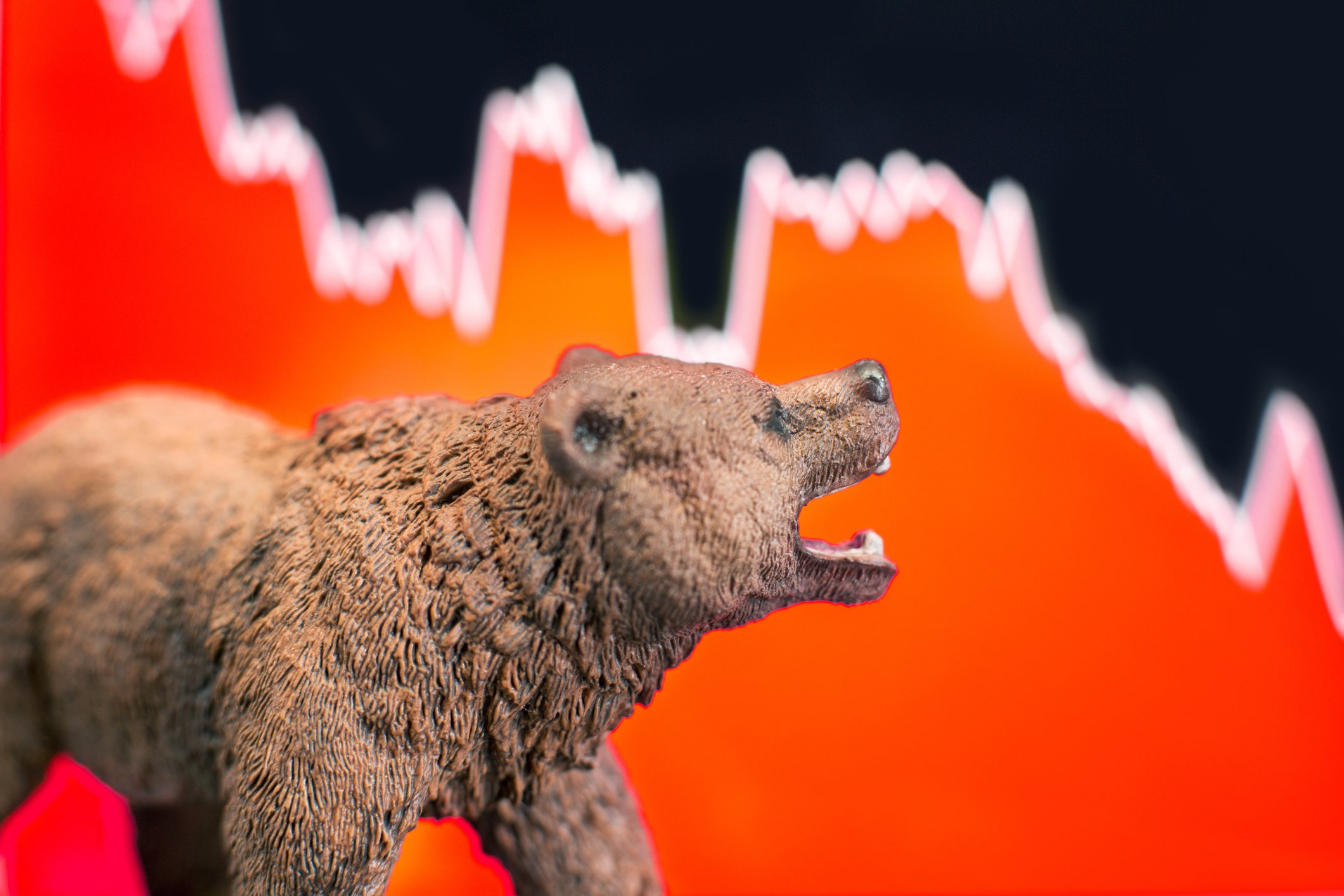There's no two ways about it -- it's been a volatile, and occasionally brutal, past three weeks for investors.
Since Feb. 19, which is when the benchmark S&P 500 (^GSPC +1.09%) hit its all-time closing high, the 123-year-old Dow Jones Industrial Average (^DJI +1.05%) has logged its three biggest single-session point gains, as well as six of its 11 largest single-day point declines in history. This includes the Monday, March 9, meltdown that saw 7.6% wiped off the value of the S&P 500 and nearly 7.8% erased from the Dow.

Image source: Getty Images.
At the heart of the most volatile year for the stock market since 2011 is the spread of coronavirus disease 2019, or more simply COVID-19. Believed to have originated within China's Hubei province, the lung-focused COVID-19 illness has infected almost 114,000 globally and killed over 4,000 people, according to a World Health Organization situation report from early on March 10. What's particularly worrisome is that, while China's newly confirmed cases have declined substantially, there were more than 4,100 newly confirmed cases outside of China on March 10, with COVID-19 confirmations rising rapidly in countries like Italy, South Korea, Iran, and the United States.
Aside from being a clear threat to the well-being of the elderly and those with compromised immune systems, COVID-19 also represents a serious threat to supply chain disruption. Although some companies have the luxury of stay-at-home workers, not all companies do. Not to mention, stay-at-home workers can have negative ripple effects throughout local communities. Suffice it to say, talk of recession and a bear market for stocks has picked up dramatically in recent days.
Typically, when the foundation for the U.S. economy or stock market show signs of cracking, investors and consumers turn to the Federal Reserve to "save the day." Unfortunately, this hero without a cape could use every tool in its arsenal, and I don't think it would be enough to prevent a bear market or a U.S. recession.
Let me walk you through why traditional monetary policy simply won't work this time around.

Image source: Getty Images.
The Fed has a lot of tools in its arsenal to strengthen the U.S. economy and calm investors
The most conventional way that economic weakness is dealt with is through monetary easing. The Federal Reserve typically accomplishes this by adjusting (in this instance lowering) its federal funds target rate. While the Fed doesn't directly pull a lever and control interest rates, adjusting the fed funds rate – i.e., the rate that depository institutions charger other banks and credit unions for overnight lending -- does have a trickle-down effect that impacts everything from the interest rate on your variable-rate credit card to the interest you receive on your savings account at the bank.
Why lower the federal funds rate? The idea here is that lower overall interest rates will encourage businesses and consumers to borrow money. This should lead to hiring, innovation, and improved growth prospects on the business end, with consumers upping their buying capacity. Since roughly 70% of U.S. gross domestic product is based on consumption, an uptick in consumer buying can have a very positive impact on U.S. growth prospects.
The Fed may also lean on unconventional methods, such as quantitative easing or forward guidance. Quantitative easing (QE) involves the idea of the Fed repurchasing Treasury notes to drive down yields and encourage borrowing. Bond prices and bond yields have an inverse correlation, so buying bonds and driving up their price will push yields lower.
Meanwhile, forward guidance refers to the idea of the Fed issuing guidance on short-term rates to influence (i.e., bring down) long-term yields. Again, the purpose here is to spur lending activity.
Last week, the Federal Reserve surprised Wall Street and leaned on its conventional tools by reducing the federal funds target rate 50 basis points to a fresh target rate of 1% to 1.25%. It was the first time the Fed cut the federal funds rate between meetings since the financial crisis in 2008. The expectation is that this move, like other cuts before it, will steer the U.S. economy clear of a recession and bolster an ailing stock market.
But that's far from a guarantee.

Image source: Getty Images.
Five reasons monetary policy isn't going to work this time
For one, the Fed isn't trying to repair a broken economy. It's attacking an exogenous shock to the economy by attempting to make capital cheaper. The problem here is that capital was already inexpensive and abundant prior to COVID-19 disrupting supply chains. Even if the Fed is successful in getting businesses to borrow cheaply and produce additional product, lower rates do nothing to calm consumer fears. In other words, it doesn't address the underlying problem of why consumers aren't buying, which is a combination of fear, uncertainty, or perhaps that they're quarantined or unable to work due to the spread of coronavirus in or near their community.
Second, any sort of monetary action taken by the Fed typically takes anywhere from three months to two years to fully work its way into the U.S. economy. With emotions and fear in the driver's seat at the moment, there's simply nothing in the Fed's arsenal of conventional and nonconventional tools that will expedite these results. In case you haven't noticed, it took less than three weeks for the S&P 500 go from all-time closing high to being 1% away from an official bear market (a decline of 20% from a recent high).
Third, the Fed is reliant on backward-looking data. The nation's central bank isn't designed to respond to short-term economic threats, but rather guide the economy with a vision for what might happen one to five years down the road. Utilizing data that can sometimes be a month or two old can lead to overreactions by the Fed.
Fourth, the Fed is behind the eight-ball when it comes to cutting its federal funds rate this time around. Previous recessions have been dealt with by reducing the federal funds rate by an average of 500 basis points. But in its most recent monetary tightening cycle, the nation's central bank was never higher than a range of 2.25% to 2.5%. Another 100 basis points from where the Fed is now would put the federal funds rate back at its record low of 0% to 0.25%. The Fed simply doesn't have the tools or firepower to save the U.S. economy from a recession.
Fifth and finally, unconventional tools, should the Fed decide to go this route, have a mixed track record of success. Although the Fed is largely credited with abating the financial crisis more than a decade ago with QE, other central banks that have attempted to combat slowing growth or recessions with unconventional tools, such as Japan and the European Union, have been met with years of stagnant growth prospects.
Short story long, you can't count on the Fed to prevent a coronavirus panic-induced recession or bear market, if that's where we're headed.

Image source: Getty Images.
Stay invested, even if the Fed can't save the stock market this time around
However -- and here comes a very important "however" -- investors would be wise to remain invested in the stock market throughout this period of volatility.
Historically, most stock market corrections tend to last for 3.5 months or less, from peak to trough, and every single correction in the S&P 500 since the beginning of 1950 has been completely erased by a bull-market rally.
What's more, many of the stock market's best days occur within very close proximity to its worst days. As noted, the Dow has had three of its largest single-day point gains mixed among its six largest single-session point losses in history over the past three weeks. Missing out on even a small handful of these big gains can significantly reduce your potential to compound your wealth over time.
No matter what the stock market has thrown at investors over the years, they've been rewarded for their patience. Thus, as the Fed scrambles for answers, remain calm and stick to your investing game plan. History pretty decisively shows that it'll all work out in the long run.







